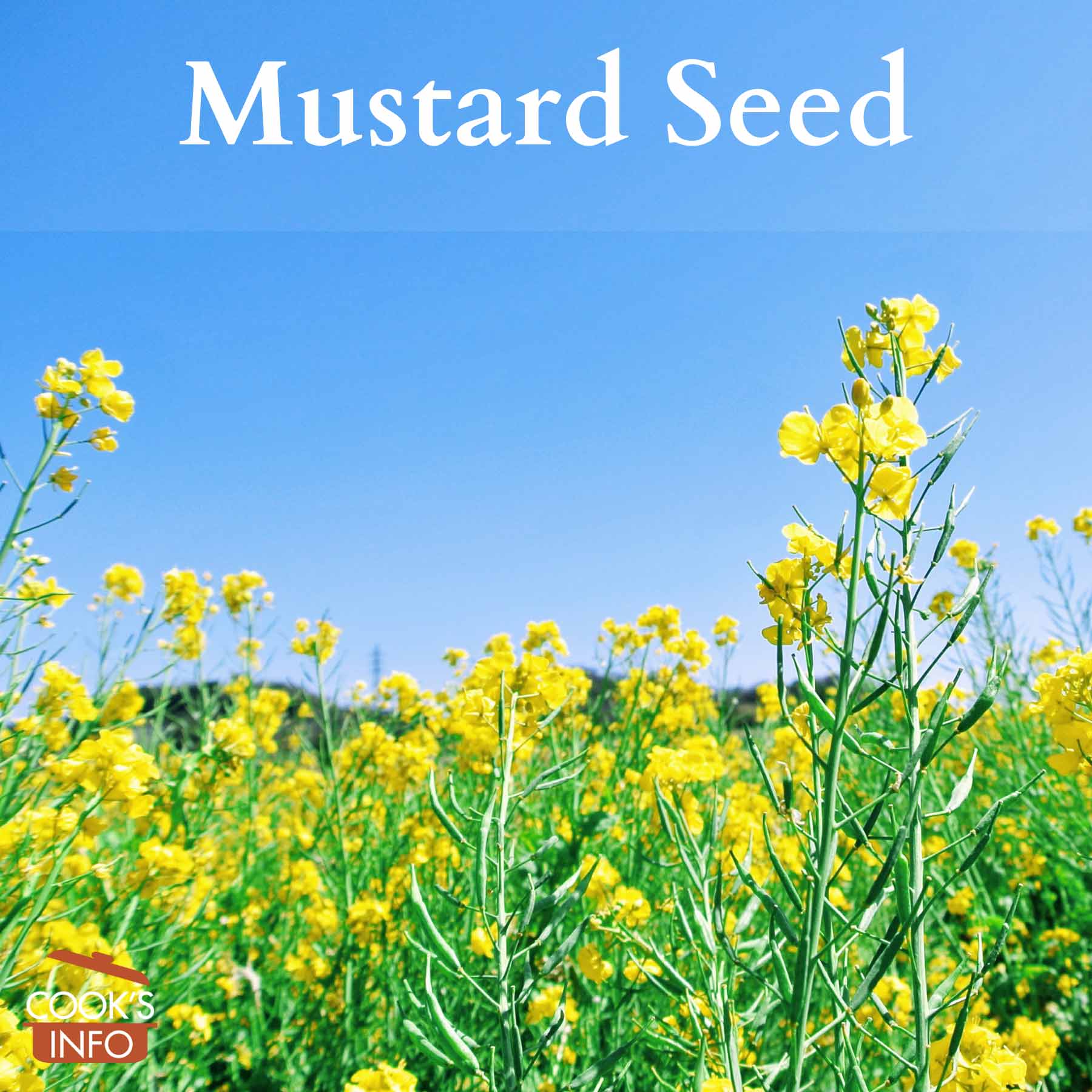There are three kinds of mustard seed: white, brown, and black. They each have different flavours, uses and markets.
See also: Mustard
White Mustard Seed
The plant that white mustard seeds come from is called “brassica alba“. It is native to the Eastern Mediterranean. It is a very prolific plant: it has escaped in many places from cultivation and now grows wild. The colour of the seed is actually tan rather than white. It is the mildest mustard seed, with no smell when ground until moistened.
In North America, the white mustard seed remains the preferred seed to make prepared mustard from.
White mustard seeds are often used in pickling.

White mustard seed. Andrea / Pixabay.com / 2005 / CC0 1.0
Brown Mustard Seed
Brown mustard seeds come from the mustard plant called “brassica juncea“. The plant is native to South Asia. The brown seeds are the hottest of all mustard seeds. They are used more and more in Europe to make prepared mustard (the condiment) from, particularly in France.
In North America, the brown seed plant is used more for its leaves, which are eaten as a potherb called “mustard greens“.
In Indian cooking, the brown seeds are popped first in hot oil to bring out a nutty flavour.
These are sometimes sold mislabelled as black.

Brown mustard seed. Dsaikia2015 / wikimedia / 2015 / CC BY-SA 4.0
Black Mustard Seed
Black mustard seeds come from the mustard plant called “brassica nigra“. The seeds aren’t actually black; they’re dark brown with a reddish tinge. The seeds are only about half the size of white mustard seeds. The black seeds are not very common anymore, as the pods are very brittle and drop their seed easily, making them hard to harvest them mechanically and thus more expensive for consumers.
Black mustard seeds have no smell until ground and moistened. In Indian cooking, black mustard seeds, along with brown, are the preferred mustard seeds. They are fried in oil, which mellows the taste and brings out a sweetness.

Black mustard seed. Gaurav Dhwaj Khadka / wikimedia / 2019 / CC BY 4.0
Cooking Tips
If a recipe calls for mustard, it means prepared mustard. If mustard seed (or powder, or greens, for that matter) are meant, the recipe will specify.
Mustard seed when ground and added to a liquid releases mustard oil, which gives the taste and smell characteristic of mustard.
Equivalents
50 g mustard seed = ¼ cup = 1.75 oz.
60 g mustard seed = ⅓ cup = 2 oz.
History Notes
Mustard was probably brought the Britain by the Romans.
As of 1996, France used yearly 25,000 tons of mustard seed to make mustard. 95% of that came from Canada. The French had mulled the idea of subsidies to encourage French farmers to go back to growing more mustard seed, but according to a Michel Chazot at the French Ministry of Agriculture, such a move would have likely invoked a complaint by Canada before the World Trade Organization. [1]Platt, Will. Dijon Mustard Makers in a Jam Over Seeds. Los Angeles Times. 8 June 1996.
Language Notes
The old English word for mustard seed was “senvy”.

Dried mustard seed plant. ©CooksInfo / 2021

Mustard seed yield from above plant (less than 1 teaspoon). ©CooksInfo / 2021

Dried mustard seed pods are long and thin. Notice the sharp hairs that can penetrate into your skin and hurt. ©CooksInfo / 2021

Dried mustard seed pod hulls. ©CooksInfo / 2021
References
| ↑1 | Platt, Will. Dijon Mustard Makers in a Jam Over Seeds. Los Angeles Times. 8 June 1996. |
|---|


